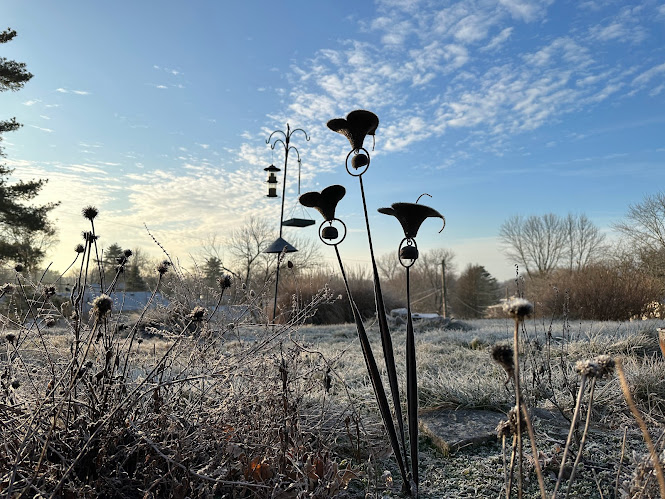3-5-22 Out of surgery—so far, so good
(Tricia)
Although Linda’s surgery was originally scheduled for 7:30 this morning, they did not come to take her down to pre-op until closer to 11:00. One of our biggest fears was that she would refuse the surgery at the last minute, as she had the hip aspiration on Wednesday. But this was quite different, in that they took her to surgery on her comfortable bed, rather than moving her abruptly to a hard metal table that caused her great pain—much better in every way. When we were talking to her this morning, she wasn’t happy to be having the surgery, but was very willing. Even in her compromised state, she understood that the surgery was a necessary treatment for that pain. That was a relief.
She was in surgery about three hours. Dr. S came out to talk to us afterward to say everything went as well as could be expected. The infection did, unfortunately, go all the way to the joint, so he had to remove the affected tissue, replace the easily removable hardware, and seed the entire area with antibiotic powder. Fortunately, the infection had not gone into the cartilage—had the infection had eaten away at the cartilage, the procedure would have been far more complicated.
Now we will wait for the results of the cultures taken during the surgery—they will show exactly what type of infection has caused the problem, so that the doctors can start targeted antibiotics. We found out this morning just before they took Linda to surgery that the cultures that Dr. C (the infectious disease doctor) took from the wound before surgery had tested positive for vancomycin-resistant e.coli, which is not an easy infection to treat. Dr. C told us that the swab culture results were not definitive because VRE is often found in hospital environments and might actually only have been on the surface, not in the wound. However, given that Linda had been given several rounds of vancomycin last fall for C.diff, VRE is likely the culprit. And what makes it even less fun is that, like C.diff, VRE requires all staff and visitors to gown up and wear gloves every time they enter the room to try to prevent its spread to other patients.
The biggest concern after Linda came out of surgery was that the cardio staff could not get her heart rate back down into a normal range—it was staying in the 150s to 170s.. This happened because she was unable to take her usual medications by mouth after the surgery because she was still sleeping, and the anesthesia itself had a negative effect. They had to resort to alternative and less effective meds that could be given through her IV.
But the good news is that Linda actually opened her eyes and spoke to Ed about 30 minutes after they brought her back, and she has been able to answer questions (albeit with her eyes closed!). She still is mostly sleeping, but communicative at times. That is much better than after her first surgery, when she did not wake up at all from the anesthesia for around 16 hours. We had talked to the anesthesiologist ahead of the surgery about whether anything could be done to protect her cognitive function from the effects of the anesthesia—she told us that they always work to use as much as necessary but as little as possible, but she would do what she could.
It’s close to 10 p.m. now and we’re going to head home as soon as we hear that her heart rate has been brought back to normal. Linda woke up enough to take her usual meds by mouth about 30 minutes ago, so they should be going into effect soon. We played some relaxing music all afternoon: “Weightless” by Marconi Union. I read that this song in particular helps with anxiety, pain management, and healing, and I figured it couldn’t hurt! I know it helped Ed and me relax considerably :-). It has been a long day, but she has done really well. Tomorrow her recovery starts again. Thanks to everyone for keeping Linda in your thoughts.

Comments
Post a Comment